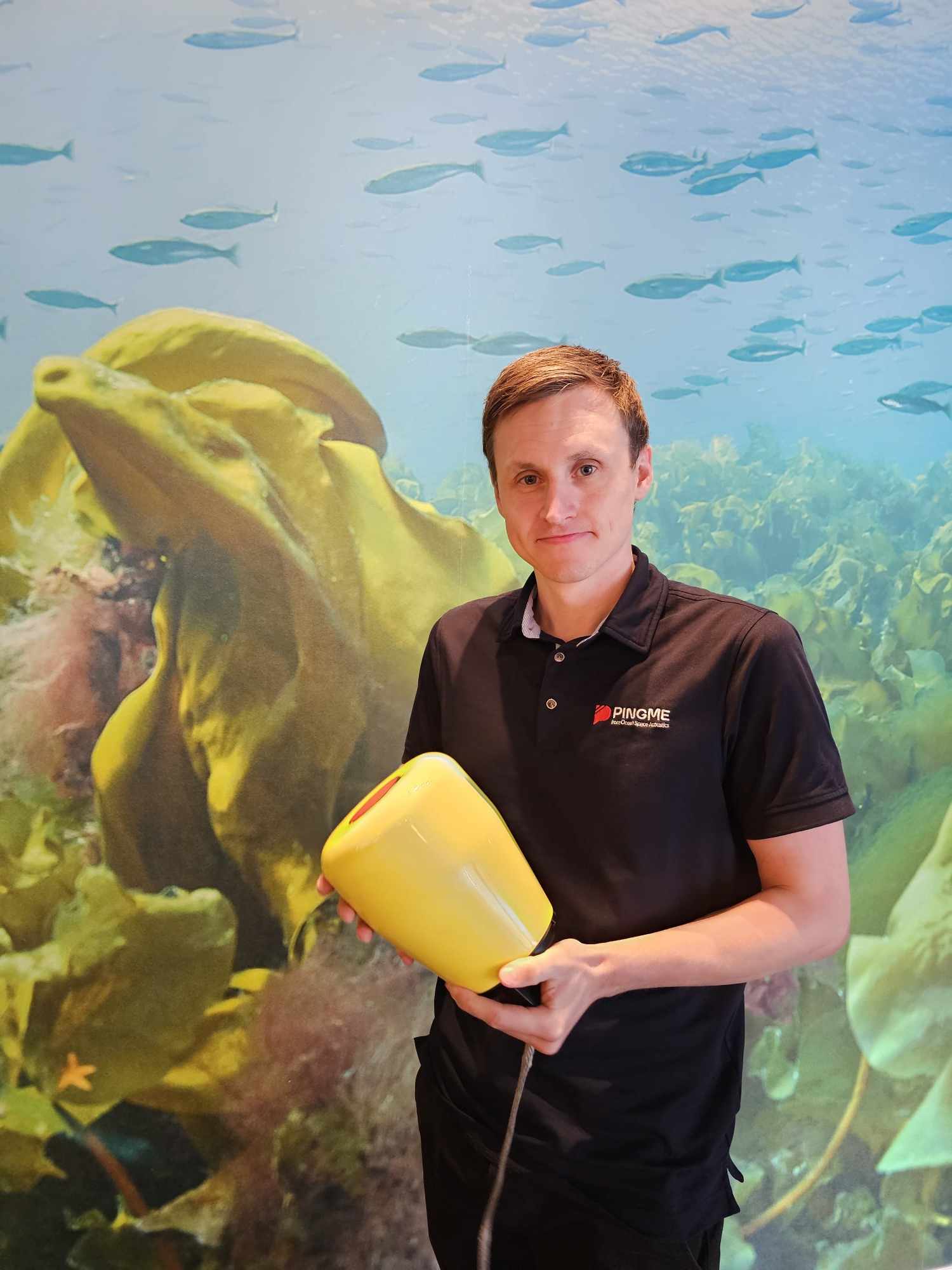Sep. 2024
New, sad record on the Norwegian Directorate of Fisheries’ annual clean-up campaign
On the Norwegian Directorate of Fisheries’ annual clean-up campaign, a record was once again set in the number of lost and remaining fishing gear that was picked up and removed from the seabed. This despite the fact that 20% less effort was put in than last year. “We hope our PingMe technology can make an important contribution to sustainable fisheries by preventing the growth of ghost fishing”, says sales manager Andreas Vie Murvold.
The Norwegian Directorate of Fisheries conducts annual sea-going clean-up expeditions for lost and remaining fishing gear, and reports that they have once again set a record in the numbers that have been taken up and removed from the seabed. During this year’s trip along the Norwegian coast and egga edge, a total of 1,637 fishing nets were removed in the period 7 August to 11 September at a depth of 50-1,400 metres. In 2023, a 20-year-old record was broken when they removed 1,339 nets, but now just one year later, this sad record has been broken by almost 300, despite 20% less clean-up efforts than last year. In addition to the fishing nets, 25,250 meters of line, various types of jigging lines, 16,500 meters of rope, 78 traps, large quantities of wakes and anchors, as well as 8,400 meters of spinning wad rope were taken up and removed on this year’s voyage. In addition, over 5,000 trawl fishing components were recorded and approx. 300 square meters of netlines. The Norwegian Fisheries Directorate’s Environment Section is satisfied with the results of this year’s trip, but says it is disturbing that there has never before been so much fishing gear left and lost in the sea.
Although the annual expeditions for removal of lost and abandoned fishing gear are a very important contribution to reducing marine litter and ghost fishing, the Norwegian Directorate of Fisheries’ action plan against marine litter has the vision of reducing the need for clean-up in the future. This will largely depend on good, preventive measures to reduce the growth of ghost fishing equipment, and here, the biggest contribution must come from the fishermen themselves. Not only are they obliged to report the loss of fishing gear, but also to carry out their own recovery attempts. Such work is very challenging and resource-intensive, because nets and fishing gear that you lose the connection to from the surface are completely subject to waves and ocean currents. This means that lost gear can potentially end up far away from the location where it was lost. In addition to a very large search radius, searching for something underwater at depth requires remotely controlled vessels and tools in the million class, often with specially trained pilots. The way to solve this problem is therefore to develop technical solutions that better enable the fisherman to find lost gear, and also to increase the use of degradable solutions in fishing gear.
«We see that better and more robust fishing nets are being developed in degradable materials, and that the use of fishing nets with rotting wire is fortunately increasing,” says sales manager at Ocean Space Acoustics in Trondheim, Andreas Vie Murvold. “But this development takes time, and certainly not all types of fishing gear can be produced in degradable materials. By marking the fishing gear with an underwater acoustic PingMe sensor from us, you can get it to send its position up to the ship should it be lost. We have made the PingMe sensor small and light, and it can easily be hooked onto the net, line or trawl bag with a carabiner. The PingMe sensor can withstand a depth of 1,000 metres, a range of 2 kilometers, and has a battery life of up to 2 years if lost. During active fishing, PingMe can also log temperature data which can contribute to more precise fishing so that fishermen fill their quota faster. This saves them fuel, which in turn is a plus for the environment.”

«We know that our technology can make an important contribution to finding fishing equipment that has gone astray, and in that way reduce the number of death traps for animals in the sea», says Andreas Murvold.